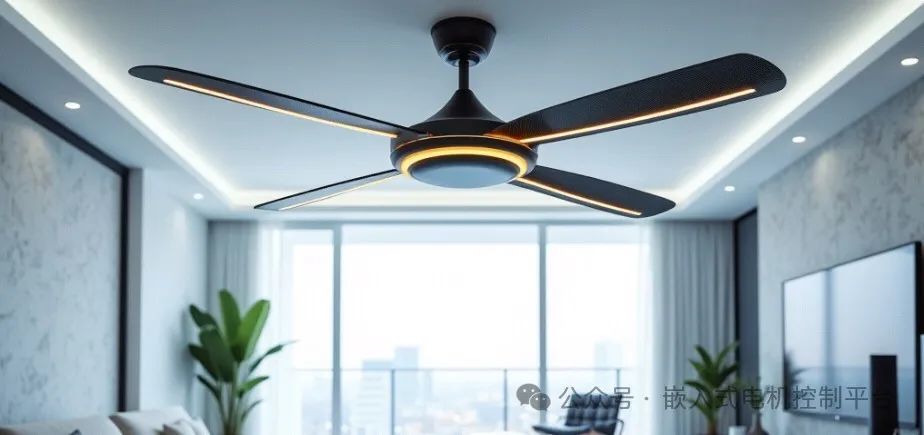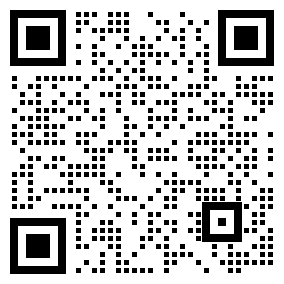吊扇灯电机控制技术涉及电机驱动、调速、调光、安全保护以及智能化等多个方面,其关键要点如下:The motor control technology of ceiling fan lamp involves many aspects such as motor drive, speed regulation, dimming, safety protection and intelligence. The key points are as follows:

1. Motor types and drive technologies
- AC Motor (AC) :
- Traditional capacitive split-phase motor has simple structure and low cost, but narrow speed range and low efficiency.
- Control mode: Adjusting voltage through TRIAC or relay to achieve speed regulation.
- Brushless DC Motor (BLDC) :
- High efficiency, low noise, wide speed range, support stepless speed change, but the cost is higher.
- Control mode: Electronic commutation (ECM) and PWM (pulse width modulation) technology are used to achieve accurate speed regulation by controlling current and frequency.
- Frequency conversion technology: suitable for high-power or high-precision scenarios, adjust the motor speed by changing the power frequency.
2. Control mode
- Wired control:
- Wall switch level control (traditional drawstring or push-button).
- Need to solve the multi-channel signal (fan gear, light brightness) line layout problem.
- Wireless remote control:
- Radio frequency (RF) remote control: strong anti-interference ability, wide coverage (10-30 meters).
- Bluetooth /Wi-Fi: Support mobile APP control, can be integrated into the smart home system.
- Voice control: Use smart speakers (such as Amazon Alexa and Google Home) to implement voice commands.
3. Speed regulation and dimming technology
- Fan speed adjustment:
- Ac motor: Through thyristor voltage regulation or shift capacitor switch to achieve multi-speed regulation.
- Dc motor: PWM regulates current or voltage, supports stepless speed change and soft start.
- Light dimming:
- Dimming mode: thyristor dimming (compatible with traditional lamps), PWM dimming (commonly used LED lights).
- Dimmer compatibility issues need to be addressed (such as LED driver matching dimmer).
- Sync control: Coordinate the separate or linked operation of fans and lights (e.g., "Turn all functions off with one click").
4. Safety and protection features
- Overcurrent/overvoltage protection: prevents motor or drive circuit damage due to voltage fluctuations or short circuits.
- Overheat protection: built-in temperature sensor, automatic power off when overtemperature.
- Blocking protection: Detect motor blocking and cut off the power supply to avoid burning.
- Soft start: gradually increase the motor speed to reduce mechanical shock and electrical surge.
5. Intelligence and Internet of Things integration
- Intelligent scene linkage:
- Connect with the temperature and humidity sensor to automatically adjust the wind speed according to the environment.
- Automatically adjust the light brightness according to the light intensity.
- Timing and reservation function: Set the timing switch of the fan/light or the sleep mode.
- OTA Upgrade: Optimize performance by remotely updating control firmware over Wi-Fi or Bluetooth.
6. Energy efficiency and environmental protection
- High efficiency motor design: copper wire winding, low loss iron core, improve energy conversion efficiency.
- Standby power optimization: The power consumption in remote standby mode should be less than 1W (in line with international energy efficiency standards).
- LED drive efficiency: Use high PF (power factor) and low THD (harmonic distortion) LED drive power supply.
7. EMC and anti-interference design
- Electromagnetic Compatibility (EMC) : Prevents electromagnetic interference from affecting other equipment when the motor is running.
- Anti-interference measures:
- The motor drive circuit is equipped with filters and shielding layers.
- The wireless signal uses frequency-hopping technology (such as 2.4GHz FHSS) to avoid co-frequency interference.
8. Structure and heat dissipation design
- Heat dissipation system: motor housing design heat dissipation hole, or built-in fan forced heat dissipation (suitable for high-power motor).
- Mechanical structure: Ensure mechanical compatibility between the motor and the lamp assembly, avoid resonance or noise.
- Insulation and sealing: dustproof, moisture-proof design (especially suitable for humid environments).
9. User interface and interaction
- Remote control design: The key layout is simple, and the common mode (such as natural wind, sleep wind) can be switched by one button.
- Status feedback: indicates the current gear or fault information through the light color or buzzer.
- APP interaction: Graphical interface displays real-time wind speed, brightness, and energy consumption data.
10. Reliability and longevity
- Motor life: DC brushless motor life can usually reach more than 30,000 hours (no carbon brush wear).
- Component selection: Key devices such as capacitors and MOS tubes should be selected as industrial or automotive standards.
- Test and verification: Through high temperature, high humidity, vibration and other reliability tests to ensure long-term stable operation.
Sum up
The core of ceiling fan lamp motor control technology is to balance performance, cost, safety and user experience **. As the demand for intelligence increases, future technologies will focus more on iot integration, AI algorithm optimization (such as adaptive wind speed regulation), and energy management (such as solar power supply). At the same time, it must comply with international standards (such as UL, CE, CCC certification) to ensure market access.
免责声明: 本文章转自其它平台,并不代表本站观点及立场。若有侵权或异议,请联系我们删除。谢谢! Disclaimer: This article is reproduced from other platforms and does not represent the views or positions of this website. If there is any infringement or objection, please contact us to delete it. thank you! |


